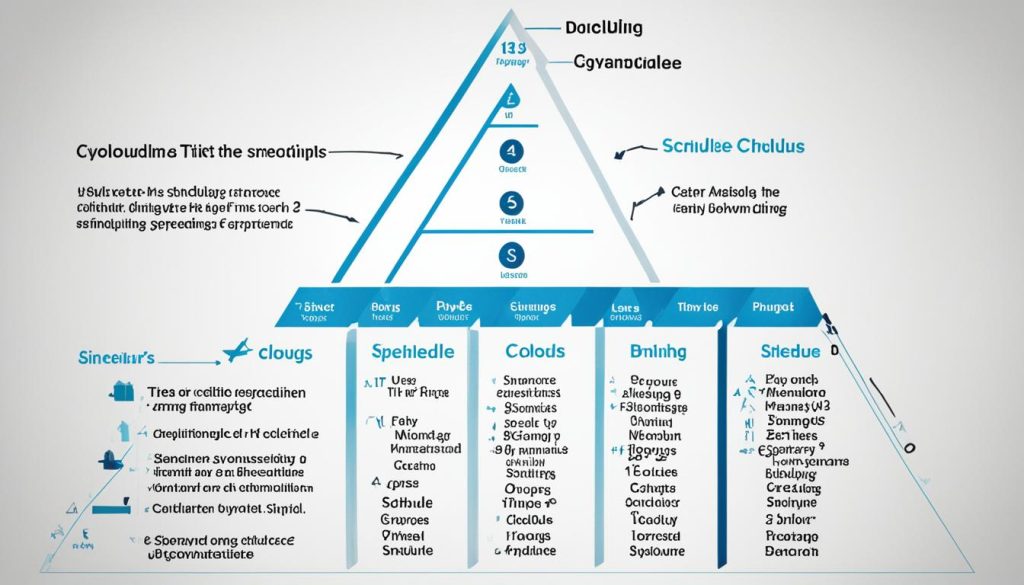Did you know that marijuana, heroin, LSD, ecstasy, and magic mushrooms are all classified as Schedule 1 drugs in the United States? These drugs are considered to have no medical value and a high potential for abuse, leading to their classification as illegal substances with severe regulatory restrictions.
Key Takeaways:
- Schedule 1 drugs, such as marijuana, heroin, LSD, ecstasy, and magic mushrooms, are categorized as illegal substances with no recognized medical value and high potential for abuse.
- The Drug Enforcement Agency (DEA) determines the drug scheduling system, evaluating a drug’s potential for abuse and medical value.
- Marijuana’s classification as a Schedule 1 drug is controversial, with arguments against its inclusion alongside dangerous substances like heroin.
- A drug’s schedule has significant implications for regulation, access, and research opportunities.
- The process of rescheduling a drug involves various steps, including evidence review and decision-making by the DEA.
The Drug Scheduling System: How It Works
The drug scheduling system, implemented by the Drug Enforcement Agency (DEA) in the United States, plays a crucial role in regulating and classifying drugs. This system serves as a framework for assessing a drug’s potential for abuse and medical value, enabling the DEA to assign an appropriate schedule.
Drugs are categorized into five schedules, each representing a different level of control and regulatory restrictions. Schedule 1 drugs are deemed to have a high potential for abuse and no recognized medical value. These substances include marijuana, heroin, LSD, ecstasy, and magic mushrooms.
On the other hand, drugs in schedules 2 through 5 have varying levels of medical value and potential for abuse. Schedule 2 drugs, such as cocaine, methamphetamine, and fentanyl, have accepted medical uses but are highly addictive. Drugs in schedules 3, 4, and 5, such as ketamine, Xanax, and codeine, have lower abuse potential and accepted medical uses.
The drug scheduling system ensures that appropriate measures are in place to control the distribution, use, and research of substances based on their potential risks and benefits, with the aim of protecting public health and safety.
An Overview of the Drug Scheduling System
Here is a breakdown of the drug scheduling system:
- Schedule 1: High potential for abuse, no recognized medical value (e.g., marijuana, heroin)
- Schedule 2: High potential for abuse, accepted medical uses (e.g., cocaine, methamphetamine)
- Schedule 3: Potential for abuse, accepted medical uses (e.g., ketamine, anabolic steroids)
- Schedule 4: Lower potential for abuse, accepted medical uses (e.g., Xanax, Ambien)
- Schedule 5: Lowest potential for abuse, accepted medical uses (e.g., cough syrups with codeine, Lyrica)
Table: An Overview of the Drug Scheduling System
| Schedule | Potential for Abuse | Medical Value |
|---|---|---|
| Schedule 1 | High | No recognized medical value |
| Schedule 2 | High | Accepted medical uses |
| Schedule 3 | Potential | Accepted medical uses |
| Schedule 4 | Lower | Accepted medical uses |
| Schedule 5 | Lowest | Accepted medical uses |
By categorizing drugs into different schedules, the DEA aims to ensure the appropriate regulation and control of substances based on their potential risks and benefits. This system guides the enforcement of drug laws, enables healthcare professionals to prescribe medications responsibly, and influences the accessibility of drugs for research and medical purposes.

Marijuana’s Schedule 1 Classification
One controversial aspect of the drug scheduling system is the classification of marijuana as a Schedule 1 drug. Many argue that marijuana should not be classified in the same category as heroin, as it is considered to be less dangerous.
The classification is primarily based on the perceived lack of medical value, despite growing evidence of its potential medical benefits. The controversy surrounding marijuana’s classification highlights the need for a reevaluation of the drug scheduling system.

| Arguments against Marijuana’s Schedule 1 Classification | Arguments supporting Marijuana’s Schedule 1 Classification |
|---|---|
| Marijuana has shown potential for medical use in treating various conditions such as chronic pain, epilepsy, and multiple sclerosis. | Marijuana has a high potential for abuse and can lead to dependence and addiction. |
| Several states in the United States have legalized medical marijuana, recognizing its potential therapeutic benefits. | Marijuana can impair cognitive function and memory, especially in adolescent users. |
| The criminalization of marijuana has disproportionately affected marginalized communities. | Marijuana is often used as a gateway drug, leading to the use of more dangerous substances. |
Implications of Drug Schedules
A drug’s schedule has significant implications for its regulation and access. Different drug schedules, ranging from Schedule 1 to Schedule 5, determine the level of regulatory restrictions and the availability of these drugs for medical or non-medical use.
Schedule 1 and 2 drugs face the strictest regulatory restrictions and are generally illegal for non-medical use. These drugs are classified as having a high potential for abuse and no recognized medical value. Examples of Schedule 1 drugs include heroin, LSD, and ecstasy.
Regulatory restrictions on Schedule 1 and 2 drugs limit their supply and access, which also translates into limited research opportunities. The stringent regulations make it difficult for researchers to obtain and study these substances, hindering the exploration of potential medical applications and advancements.
On the other hand, drugs classified as Schedule 3, 4, and 5 have varying levels of medical value and face fewer regulatory restrictions. These drugs may have recognized medical uses and a lower potential for abuse. Examples of Schedule 3 drugs include ketamine and anabolic steroids.
With fewer regulatory limitations, Schedule 3, 4, and 5 drugs offer more opportunities for research and controlled access. This allows scientists and medical professionals to study their effects, develop new treatments, and better understand their potential benefits and risks.
Comparison of Drug Schedules
| Schedule | Regulatory Restrictions | Medical Value | Potential for Abuse |
|---|---|---|---|
| Schedule 1 | Strictest restrictions; generally illegal for non-medical use | No recognized medical value | High potential for abuse |
| Schedule 2 | Strict restrictions; highly regulated for medical use | Recognized medical value with severe limitations | High potential for abuse |
| Schedule 3 | Less strict restrictions; available for medical use | Recognized medical value with less limitations | Potential for abuse, but lower than Schedule 1 and 2 |
| Schedule 4 | Moderate restrictions; available for medical use | Recognized medical value with fewer limitations | Lower potential for abuse than Schedule 1, 2, and 3 |
| Schedule 5 | Minimal restrictions; available for medical use | Recognized medical value with minimal limitations | Lowest potential for abuse |
Rescheduling a Drug
The process of rescheduling a drug in the United States can be initiated by the US attorney general or through a petition from the Drug Enforcement Agency (DEA), the US Department of Health and Human Services, or the public. The goal of rescheduling is to reevaluate a drug’s classification and potentially change its schedule based on new evidence.
To reschedule a drug, a thorough review of available evidence on the drug’s medical value and potential for abuse is conducted. This review involves analyzing scientific research, clinical data, and public health considerations. The Drug Enforcement Agency carefully considers all the information before deciding whether a change in scheduling is justified.
Rescheduling a drug is a rigorous process aimed at ensuring that the drug’s classification aligns with the most current evidence and understanding of its risks and benefits. While the process can be complex and time-consuming, it has been successfully carried out in the past. For example, in 2014, hydrocodone combination products were rescheduled from Schedule III to Schedule II due to concerns about their potential for abuse.